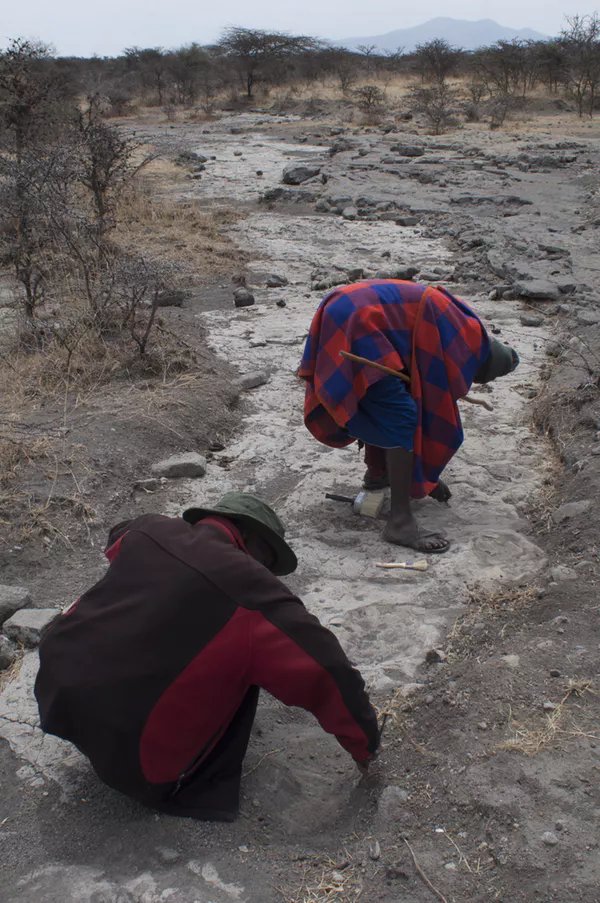The Maasai Legend Of Hero Lakalanga And His Ancient Footprints
AncientPages.com - In 1976 paleoanthropologist Mary Leakey and other scientists reported that they’d found ancient hominin footprints at a site in Laetoli, northeastern Tanzania.
The footprints were frozen in volcanic deposits from the Pliocene, an epoch that lasted from 5.333 million to 2.58 million years ago. The team hypothesised that the footprints belonged to an extinct hominin species famously known as Lucy. The species’ scientific name is Australopithecus afarensis.
Additional footprints were reported in 2016 by a research team made up of scientists from Tanzania and Italy. These footprints are about 150m away from the original discovery. This new trackway is surrounded by hundreds of footprints belonging to other mammals and birds; there are even frozen raindrop impressions. The hominin footprints were left by two bipedal (that is, walking on two legs) individuals walking on the same surface, at the same time, in the same direction and at the same moderate speed as those reported by Leakey and her colleagues.
Footprints at the second, more recently recorded site in Laetoli. Credit: Marco Cherin
Taken together, the two groups of footprints testify to the presence of at least five bipedal early hominins moving as a group through the Laetoli landscape. Both the new and the older footprints have provided scientists with some clues in the search to understand human biological evolution.
But while the science is crucial, it is also important to know what the people who live in and around Laetoli make of these ancient footprints. What do they think the footprints represent? My colleagues and I wanted to find out. So we interviewed local Maasai with whom we were working at the Laetoli and organised some focus group discussions with others within the area as well as nearby villages of Essere, Enduleni and Kakesiyo. There are about 35,000 residents in these villages and they have been living in the area for generations.
The Maasai people connect Laetoli footprints to the tale of Lakalanga, a strong hero who helped them win a battle against a neighbouring community. According to the story – which is consolidated into the local community oral tradition – Lakalanga was so big that wherever he walked, he left visible tracks on the ground. Although there is no time reference regarding the legendary Lakalanga, interviewed elders said the story is deeply rooted among the Maasai.
Since the legendary Lakalanga occupies a unique position among the Maasai community and because there is a myth linking him with the footprint makers, there is a need to incorporate these perceptions in the interpretation and preservation of footprints. This undertaking will reduce the chance of people harming the footprint site and increase the link between local people and their history.
Why footprints matter
Fossil bones and teeth can provide palaeontologists with a great deal of data about various aspects of human evolution. Footprints are potentially much more informative. Footprint sites can be interpreted as prehistoric snapshots of the deep past, having being formed in a relatively short time span.
In fact, after being impressed on the ground, these ephemeral traces of past life can fossilise only under extremely rare geological conditions. Using footprints, scientists can reconstruct locomotion, body size, speed, and variability of extinct creatures.
Generally, fossil footprints are very useful palaeontological tools. Their features can help identify their maker
s and also to infer biological information. Nearly all the fossil human tracks discovered so far have been referred to species of the genus Homo. Laetoli is the only exception to the record.
Credit: Marco Cherin
Laetoli is in northern Tanzania at the southern margins of the Serengeti Plains in the Ngorongoro Conservation Area. The area has several other world-famous palaeoanthropological localities: Olduvai Gorge, Lake Ndutu, and Nasera Rock.
From a scientific point of view, one of the most sensational results of the 2016 study that identified the second trackway at Laetoli concerns one track maker’s body size. One individual’s footprints are surprisingly larger than those of the other members of the group, suggesting an estimated stature of about 165cm, or about 5 feet 4 inches.
This exceptional body size, which falls within the range of modern Homo sapiens maximum values, makes it the largest Australopithecus afarensis individual identified so far.
The Maasai’s interpretation
The large body size aspect is also reflected in the local community’s interpretations of the Laetoli hominin footprints.
Members of the local Maasai community excavating at Laetoli. Credit: Marco Cherin
The Maasai we spoke to and hold discussions with knew about the footprints. They mainly knew about the animal footprints because they are scattered over various volcanic tuff on the Laetoli landscapes. The Maasai who live at Laetoli and on the outskirts visit and pass through the area regularly as they herd their livestock. The narratives about Lakalanga’s footprints have also become part of the folk lore of Maasai living further away.
It was during our discussions with the local community that we learned of the story of Lakalanga, his big strides and visible tracks. They believed that Lakalanga was energetic and bigger than any other member of the society.
The myths do not comply with a part of our scientific interpretation suggesting a social group of one large male, two or three female and one juvenile. The narratives do not interpret the footprints to belong to Lakalanga and his family. Instead, the narratives link the the footprints with Lakalanga and other Maasai worriors but who were not as large and energetic as him (Lakalanga).
The discovery in 2016 of the second set of footprints – and particularly the large footprints in that set – offered further confirmation to the Maasai that the hero warrior Lakalanga really existed.
Linking footprints with the story of Lakalanga is not unique at Laetoli. There are similar stories from other sites across the world where local people associate footprints with gods and heroes.
For example, in about 450BC, Herodotus reported that footprints found along the banks of Tyras River in Moldavia were associated with gods and heroes visualised as giants. Also, footprints from the Gallipoli Peninsula in north-eastern Turkey are linked with the great hero-athlete from the Trojan war.
This just goes to show that local people curious about footprints will always seek explanations on who made them. Hence local interpretations.
Written by Elgidius Ichumbaki - Senior Lecturer in Heritage Studies, University of Dar es Salaam and Marco Cherin - Post-doc, Department of Physics and Earth Sciences, University of Perugia
This article is republished from The Conversation under a Creative Commons license. Read the original article.
More From Ancient Pages
-
 Rare Fossil Of A Dog-Sized Horned Dinosaur From ‘Lost Continent’ Identified By British Scientist
Archaeology | Dec 5, 2015
Rare Fossil Of A Dog-Sized Horned Dinosaur From ‘Lost Continent’ Identified By British Scientist
Archaeology | Dec 5, 2015 -
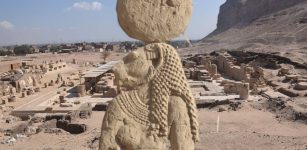 Is An Ancient Temple Dedicated To The Lioness Goddess Repit Hidden In The Cliffs Of Athribis?
Archaeology | Dec 10, 2024
Is An Ancient Temple Dedicated To The Lioness Goddess Repit Hidden In The Cliffs Of Athribis?
Archaeology | Dec 10, 2024 -
 Abydos: One Of The Most Important Cities Of Ancient Egypt
Civilizations | Jul 15, 2016
Abydos: One Of The Most Important Cities Of Ancient Egypt
Civilizations | Jul 15, 2016 -
 Ancient Roman Basilica Discovered Under Commercial Building In London, UK
Archaeology | Feb 21, 2025
Ancient Roman Basilica Discovered Under Commercial Building In London, UK
Archaeology | Feb 21, 2025 -
 Yasuke – The First Black Samurai Caused A Sensation In Japan
Featured Stories | Oct 25, 2019
Yasuke – The First Black Samurai Caused A Sensation In Japan
Featured Stories | Oct 25, 2019 -
 Was 4,000-Year-Old Seahenge In Norfolk Built To Battle Climate Change?
Archaeology | May 31, 2024
Was 4,000-Year-Old Seahenge In Norfolk Built To Battle Climate Change?
Archaeology | May 31, 2024 -
 Valhalla – The Hall Of The Fallen Where Viking Hero Warriors ‘Einherjar’ Dwell After Death
Featured Stories | Mar 11, 2018
Valhalla – The Hall Of The Fallen Where Viking Hero Warriors ‘Einherjar’ Dwell After Death
Featured Stories | Mar 11, 2018 -
 Where Is The 12,000-Year-Old Map That Could Change All We Know About Ancient Egypt Hidden?
Ancient Mysteries | Mar 21, 2021
Where Is The 12,000-Year-Old Map That Could Change All We Know About Ancient Egypt Hidden?
Ancient Mysteries | Mar 21, 2021 -
 Ancient Manuscript Reveals: Jesus Was Married And Fathered Two Children With Mary Magdalene
Archaeology | Nov 10, 2014
Ancient Manuscript Reveals: Jesus Was Married And Fathered Two Children With Mary Magdalene
Archaeology | Nov 10, 2014 -
 Ancient Mystery Of Egypt’s Black Pyramid – Did It Really Exist?
Featured Stories | Nov 28, 2020
Ancient Mystery Of Egypt’s Black Pyramid – Did It Really Exist?
Featured Stories | Nov 28, 2020 -
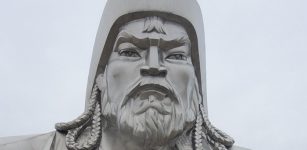 Avraga In Eastern Mongolia Was Winter Base Camp Of Genghis Khan – Study
Archaeology | Jul 8, 2020
Avraga In Eastern Mongolia Was Winter Base Camp Of Genghis Khan – Study
Archaeology | Jul 8, 2020 -
 Ancient Chinese Version Of Quipu -Tradition Of Tying Knots Dates Back To Antiquity
Civilizations | Mar 15, 2017
Ancient Chinese Version Of Quipu -Tradition Of Tying Knots Dates Back To Antiquity
Civilizations | Mar 15, 2017 -
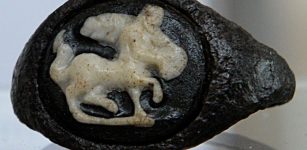 Roman Treasures Unearthed At Ancient Site Of Tiel, Netherlands
Archaeology | Apr 2, 2017
Roman Treasures Unearthed At Ancient Site Of Tiel, Netherlands
Archaeology | Apr 2, 2017 -
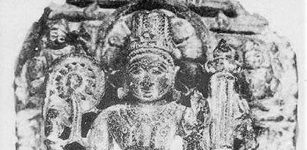 Dwarka – Pre-Harappan City That Could Rewrite The History Of The World
Civilizations | Aug 19, 2014
Dwarka – Pre-Harappan City That Could Rewrite The History Of The World
Civilizations | Aug 19, 2014 -
 Huge Subterranean Pre-Columbian Shaft Tombs In Tierradentro, Colombia
Featured Stories | Apr 28, 2021
Huge Subterranean Pre-Columbian Shaft Tombs In Tierradentro, Colombia
Featured Stories | Apr 28, 2021 -
 Surprising Discovery – Replica In The Field Museum Is A 3,000-Year-Old Sword
Artifacts | Jan 18, 2023
Surprising Discovery – Replica In The Field Museum Is A 3,000-Year-Old Sword
Artifacts | Jan 18, 2023 -
 First Egyptian Middle Kingdom Tomb Unearthed In South Asasif Necropolis In Luxor
Archaeology | Nov 5, 2024
First Egyptian Middle Kingdom Tomb Unearthed In South Asasif Necropolis In Luxor
Archaeology | Nov 5, 2024 -
 4500-Year-Old Fingerprints Reveal Children Created Pottery Vessels In Ebla Kingdom
Archaeology | Oct 16, 2024
4500-Year-Old Fingerprints Reveal Children Created Pottery Vessels In Ebla Kingdom
Archaeology | Oct 16, 2024 -
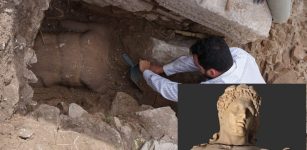 Stunning Well-Preserved Larger Than Life Statue Of Hercules Discovered In Philippi, Greece
Archaeology | Sep 24, 2022
Stunning Well-Preserved Larger Than Life Statue Of Hercules Discovered In Philippi, Greece
Archaeology | Sep 24, 2022 -
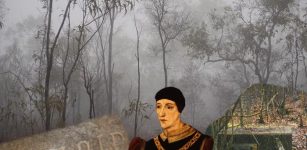 Cursed Dudleytown – What Really Happened In America’s Village Of The Damned In Connecticut
Featured Stories | May 27, 2020
Cursed Dudleytown – What Really Happened In America’s Village Of The Damned In Connecticut
Featured Stories | May 27, 2020



